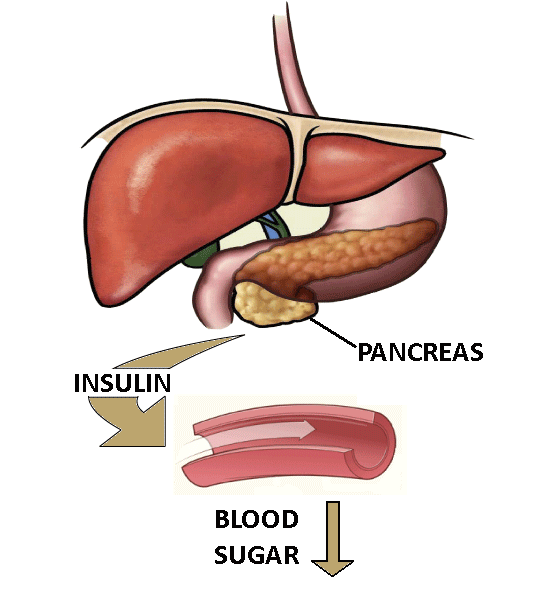Dr. Karl R.O.S. Johnson, DC
Dr. Karl R.O.S. Johnson is a chiropractic physician whose areas of expertise include chiropractic, functional medicine, functional neurology, and spinal rehabilitation. He is also a medical writer and the author of “Reclaim Your Life; Your Guide to Revealing Your Body’s Life-Changing Secrets for Renewed Health.” He also authored the “Ultimate Strategy" series of e-books on the topics of fibromyalgia, balance disorders, migraine, and other debilitating headaches, as well as unresolved thyroid symptoms. Since 1983, Johnson has owned and operated Chiropractic & Nutrition Wellness Center (now Johnson Health and Wellness Center) and Johnson Chiropractic Neurology & Nutrition at 51735 Van Dyke Avenue in Shelby Township, Michigan
For those who suffer from chronic pain, discomfort is a way of life. As difficult as it is to navigate daily living with chronic pain, it is not impossible. Through management techniques and support resources, those with chronic pain can maintain fulfilling lifestyles. Here are some tips and resources for help.
Debilitating pervasive pain affects many
According to the Centers for Disease Control, 11 percent of adults in the United States experience daily pain. This affects their ability to work and comfortably care for themselves. The pain can be debilitating. Usually, chronic pain starts with an injury or disease, but it can also seemingly materialize out of nowhere. When pain persists for 12 weeks, it becomes medically referred to as chronic. Pain can be sharp or dull, steady or intermittent, but it continues. This pain can manifest itself as headaches, lower back problems, arthritis or nerve damage-related pain. Nerve damage is considered to be a reason for some pain persisting after an injury has healed, or disease has been treated.
Read More
The road to chronic disease — from arthritis to heart disease — is paved with sugar and refined carbohydrates. It’s a freeway that leads straight to insulin resistance syndrome, given the right conditions, most notably being overweight and inactive.
The devastating chain of events that leads to chronic disease goes like this:
- Carbs and sugar break down in the digestive tract to glucose that the body uses for energy.
- Beta cells in the pancreas make and secrete insulin into the blood to ferry any glucose you don’t use to muscle, fat, and liver cells for storage.
- Given the right conditions and more glucose than your cells can manage at the moment, the call goes out for even more insulin.
- Beta cells keep the insulin flowing but eventually the body’s cells can’t absorb it or the glucose building up in your blood stream. That’s called insulin resistance.
- Eventually the beta cells can’t keep up and insulin levels plummet. Now your bloodstream is flooded with glucose, which damages nerves and blood vessels, causes inflammation, and leads to a host of chronic diseases.
Read More
Topics:
insulin resistance,
Heart Disease,
Obesity,
Hypertension,
High Blood Pressure,
Dementia,
Alzheimer’s disease,
Nonalcoholic fatty liver disease,
Prediabetes and diabetes,
Polycystic Ovarian Syndrome,
Pancreatitis
Biofeedback therapy is a great alternative treatment for patients such as pregnant women and people with pre-existing medical conditions who are unable to use drug-based pharmaceuticals. It was originally developed as a self-regulatory technique to assist with relaxation for people suffering from chronic stress and anxiety.
Biofeedback therapy works by using electrodes to measure bodily responses through several different types of biofeedback machines. Measurements such as blood pressure, sweat gland activity, heart rate and temperature are used by health care practitioners and biofeedback therapists to recommend more effective treatment plans. Treatment plans often include mental activities and relaxation techniques to strengthen the positive effects of biofeedback therapy.
Biofeedback therapy allows patients to control bodily processes that are usually involuntary. It can be used to treat common health problems such as stress, migraines and high blood pressure and is also believed to be useful in treating neurological disorders such as ADHD, PTSD, Insomnia and digestion problems.
Read More
Topics:
ADHD,
depression,
HRV Biofeedback,
Anxiety and Stress,
Biofeedback,
Insomnia and Stress,
PTSD
4 Ways to keep in Top Shape As We Age
We can count on getting older every day...until we stop aging and join the next dimension. While we are still here on terra firma the choices we make in four categories can make a huge difference in our vitality.
Our physical body is a machine. An advanced, incredible machine, but still at machine. It matters what we do to it and what we put into it on a regular basis. If we take care of our machine, it will take care of us as we age. Health and wellness must be a priority. Nutrition, exercise, inflammation and brain activation can all determine our quality of life.
Read More
Topics:
exercise,
Nutritional Help,
Brain heatlh,
Healthy Eating,
Healthy Aging,
inflammation modulation
Photo by Pixabay
BEATING OBESITY WITH EXERCISE, DIET AND MIND/BODY CONNECTION
Obesity is on the rise in the United States, with the number of Americans suffering from obesity increasing faster than ever— On top of that, other studies show that almost half of Americans do not get the amount of exercise they need to maintain good health. Many doctors and healthcare providers agree: there is most certainly a connection between a obesity and exercise.
That’s why one of the best ways that you can fight obesity is to create wellness—focused activities that help you find an enjoyable workout routine, improve sleep, eat more balanced diet and address any mental health issues that could be contributing to your weight gain.
Read More
Topics:
exercise,
Obesity,
Healthy Eating

ARE YOU OVERLOOKING THIS HIDDEN SOURCE OF JOINT PAIN, GUT WOES AND THYROID PROBLEMS? Dr. Joe Mercola Story at-a-glance
Plant lectins act as a built-in defense mechanism that ensures survival by triggering a negative reaction in predators; in humans they attach to your cell membranes, often wreaking havoc on your health.
Many lectins can cause inflammation, damage your nerves and kill your cells, while some increase your blood viscosity, interfere with gene expression and disrupt your endocrine function.
While it is nearly impossible to avoid all lectins due to their presence in countless foods, if you are struggling with an autoimmune disease or other chronic health issue, you may benefit from a lectin-restricted diet.
Among the most problematic lectin-containing foods are beans, grains, legumes and members of the nightshade family like eggplants, potatoes and peppers.
High-lectin foods can be made safe to eat through proper soaking and cooking, as well as fermenting and sprouting; using a pressure cooker is particularly beneficial for beans.
|
Read More
Topics:
thyroid symptoms,
inflammation,
Blood Type Diet,
autoimmune illness,
autoimmune disease,
Lectins,
Joint Pain
With so many options in this day and age it can be difficult to find a beneficial and natural ADD/ADHD treatment for your child. Medications, therapies, treatments, they are all over the place! In reality there is not a “worst alternative medical treatment” for ADD or ADHD. Naturally some treatments may be less effective than others, or what treatments work at first may wear off. The same theory applies to alternative treatments. To be specific, no treatment is perfect for everyone, each and every case is different in some way. Therefore, to find what does work you should find a provider that will work best for your child to develop care options specific to their needs and goals. In other words, treat the person not the diagnosis.
Read More
Topics:
ADHD Treatments










